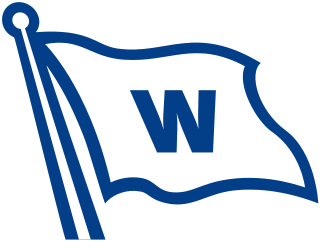
Capsizing or keeling over occurs when a boat or ship is rolled on its side or further by wave action, instability or wind force beyond the angle of positive static stability or it is upside down in the water. The act of recovering a vessel from a capsize is called righting. Capsize may result from broaching, knockdown, loss of stability due to cargo shifting or flooding, or in high speed boats, from turning too fast.

A bulk carrier or bulker is a merchant ship specially designed to transport unpackaged bulk cargo—such as grain, coal, ore, steel coils, and cement—in its cargo holds. Since the first specialized bulk carrier was built in 1852, economic forces have led to increased size and sophistication of these ships. Today's bulk carriers are specially designed to maximize capacity, safety, efficiency, and durability.

Lake freighters, or lakers, are bulk carrier vessels that operate on the Great Lakes of North America. These vessels are traditionally called boats, although classified as ships.

The SS Raifuku Maru was a Japanese Dai-ichi Taifuku Maru-class cargo ship, which was built in 1918 at Kawasaki Dockyard in Kobe, Japan, and owned by Kawasaki Kisen Kaisha, Ltd. In April 1925, it sank in a heavy storm during a voyage from Boston, USA, to Hamburg, Germany, with a cargo of wheat and a crew of thirty-eight, all of whom were lost.

Wilh. Wilhelmsen Holding ASA (WWH) is a Norwegian multinational maritime group, headquartered in Lysaker, Norway. The group employs more than 21,000 people and has operations in 75 nations. The Wilhelmsen group operates the largest maritime network in the world, with over 2200 locations worldwide.

An ore-bulk-oil carrier, also known as combination carrier or OBO, is a ship designed to be capable of carrying wet or dry cargoes. The idea is to reduce the number of empty (ballast) voyages, in which large ships only carry a cargo one way and return empty for another. These are a feature of the larger bulk trades.

Leif Höegh & Co is a shipping company founded in 1927 by Norwegian Leif Høegh (1896-1974). Since 2006 the company has been structured as two separate entities, Höegh Autoliners and Höegh LNG, with Leif Höegh & Co acting as a common holding company.
MV Vinalines Queen was a bulk carrier of the Vietnam National Shipping Lines, or Vinalines. On its last voyage the ship was travelling from Indonesia to China with more than 54,000 tonnes of nickel ore. The ship disappeared on 25 December 2011 and its fate was initially unknown. On 30 December 2011 a single survivor of its 23-member crew, Dau Ngoc Hung, was found by the British ship London Courage, after floating with a rescue vest for 5 days. He reported that the ship sank quickly in the early hours of the morning after capsizing to the left. It sank after passing the island of Luzon in very bad weather conditions in waters up to 5,000 metres (16,000 ft) deep.
A number of motor vessels have been named Jupiter, including

Nesskip hf. is an Icelandic shipping company that runs affreightment services based in Reykjavík. The company was established on the 27th of January 1974 in Seltjarnernes and was founded by a group of shipping and bulk transport enthusiasts, led by Captain Gudmundur Asgeirsson who was the first managing director of the company. It is one of Iceland's largest bulk transporting firms. According to Bloomberg it "provides a range of shipping-related services as ship owners, ship brokers, port agents, and transport and chartering consultants", and serves "cruise liners, seismic-research vessels, reefers, tankers, and dry cargo vessels and foreign deep sea fishing ships" as a port agent. The company Nesskip is valued at approximately 240 Million Norwegian Krones (KON); approximately US$23 million. Nesskip purchased its first bulk carrier in February 1974, named the Suðurland and specialises in bulk transport of goods which has been at the fore front of the company's operations for over 40 years. The company deals with the transportation of fishmeal, steel products, construction materials, cement, timber, pumice, coal, gravel, ferrosilicon, and salt as well as other FOSFA cargo. In 1977, Nesskip began to develop a close working relationship with the company Wilson ASA, who specialise in the management of shipping services. It is a member of the international shipping organisation Baltic and International Maritime Council (BIMCO). In 2006, Norwegian shipping company Wilson EuroCarriers acquired a majority share (51.6%) in Nesskip resulting in a change of ownership.
MV Christinaki was a Maltese bulk carrier which sank in the Atlantic Ocean 240 nautical miles (440 km) south west of Ireland during a force 10 gale with a cargo of scrap metal and 27 crew while she was travelling from Liverpool, United Kingdom to Vera Cruz.







